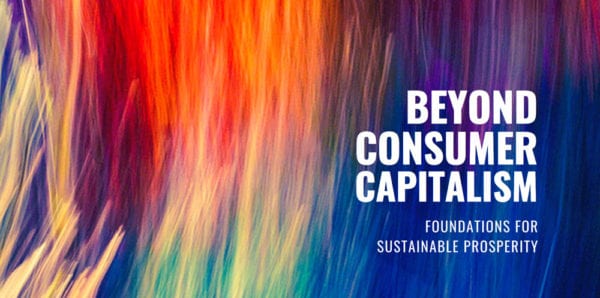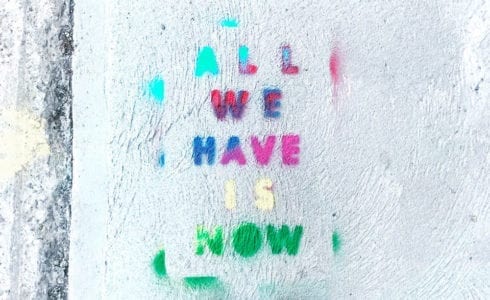Revisiting Growth—or the World Environment Day Is Not Enough
There are no silver bullets to the climate breakdown. Various scenarios offer a range of solutions to the same issue—all providing stories for a course of action sorely needed today. These opportunities can be put together to create alternatives to the prevailing business-as-usual approach. World Environment Day might have been a good conversation starter in the 1970s, the Agulhas Climate Hub write in this guest blog, but it needs a radical shakeup to get us where we need to be in time. (The blog first appeared on the Agulhas website.)

World Environment Day started in 1974 as a way of raising awareness of environmental issues such as environmental degradation, marine pollution and sustainable consumption. This year’s theme, “Beat Air Pollution”, was chosen by China and focuses on how everyone can implement lifestyle changes to reduce the amount of air pollution each of us produces. Events such as World Environment Day have been an important vehicle for framing issues of sustainability, and rightfully highlight the role each and every one of us has in ensuring our lived environment’s survival.
However, with the latest IPCC report warning that we have roughly 11 years left to implement serious measures to avoid the worst effects of climate change, and with the wildlife phenomenon called the ‘6th mass extinction’ well underway, the call for personal responsibility in energy and material consumption lacks the depth needed to tackle the enormity of the task at hand. Buying fewer plastic products and driving less as individuals is far from enough. Worse, a recent study suggests that too heavy a focus on individual action can indirectly undermine support for initiatives at a larger scale. It is therefore increasingly clear that we need to think systemically and build a robust infrastructure to facilitate these choices on a larger, more impactful scale. We need to start making serious technical changes to how we manage our economies, and make sure this radical transformation is both environmentally and socially just.
Luckily, there’s been much good work to lay the foundations for credible systemic alternatives to mass consumption and infinite growth. The concept of ’Limits to Growth’ was first published by the Club of Rome in 1972 – just two years before the first World Environment Day took place. The report’s lasting legacy has been its accurate warnings about the dangers of exponential growth in a world of limited resources – warnings that were criticised and rejected as extreme at the time. It is important to realise that subsequent revisits of the original report have shown that the forecast trends were much more accurate than is comfortable. In 2012, instead of providing further updates to the modelling, Jørgen Randers wrote 2052: a global forecast for the next 40 years, with 41 glimpses into the future by a range of professionals. The authors included Agulhas’ Catherine Cameron, whose glimpse of what would happen in Scotland makes for surprisingly accurate reading so far. Scotland has successfully invested in more wind, hydro and tidal power (captured by Kate Cerna’s 2018 Scotland case study from the Lessons for a successful transition to a low carbon economy transition review here). The Scotland and Norway power-sharing agreement glimpsed in Catherine’s forecast was in fact signed in 2015 and will come on stream in 2022. She also predicted that Scotland will complete its separation from the UK to join the new Europe of the northern states. This emphasises the importance of national leadership and how climate concerns will increasingly come to reshape the geopolitical landscape.
It is the overall narrative of the Limits to Growth report that has perhaps been the more lasting and persuasive aspect of the work, rather than its original predictions. The implications of its modelling should be the focus for those who wish to create substantive and enriching change. Here, debates on growth can find promising alternative pathways. Take, for example, the impact and popularity of Kate Raworths ‘Doughnut Economics’. Since its first proposal in an Oxfam discussion paper in 2012, it has been the subject of a bestselling economics book and has been picked up by a multitude of audiences, impressed by its multidisciplinary principles and inclusive message. In many ways, the Doughnut evokes much of the same ideas as the Limits to Growth thesis – the idea of the environmental ceiling, boundaries, using prosperity metrics that reach beyond GDP – but reimagines these limits not specifically as barriers, but as helping to define the ‘safe space’ in which humanity can thrive. The work of the One Planet Education Network also incorporates this, changing the teaching of MBA programmes to include this approach for the entrepreneurs of tomorrow. By transforming the issue away from where we can’t go to one in which we discuss where we would like to be, it has focused the argument on alternatives – better alternatives to existing growth agendas, which is where alternative growth sets itself as not just a workable option, but a better option.
This work is also seen in the calls for a ‘Green New Deal’ in the US, the UK, and beyond, which demand large-scale investment for the restructuring of national infrastructures. This transition would focus on maintaining labour and living standards through the greening of sectors while strengthening access to universal welfare, following the lines of Roosevelt’s ‘New Deal’ programme but with an explicit focus on enabling green economies. This paradigm also makes explicit the notion of a ‘green life’ as a ‘good life’, making the two inherent to each other. The focus on greening the energy sector provides clean energy supply to billions of users across the globe, thus enabling green societies rather than green choices. Catherine Cameron, Lucy Stone and Kate Cerna of the Agulhas Climate Hub have drawn on examples of well managed and ‘just’ industrial transitions across the world, producing a ‘Just Transitions’ report identifying how a combination of political will and vision and cross-societal collaborations have resulted in examples of successful low-carbon transitions across the globe.
Other alternatives completely reimagine the narrative of development as growth entirely. The Degrowth movement, or Prosperity without Growth, championed by the likes of George Monbiot, Tim Jackson and Jason Hickel in the UK, and Ugo Bardi in Italy, imagines an economy focused on ‘radical abundance’ rather than scarcity as basis for economic production. This abundance inverts the idea of more growth as inherently good, focusing on redistributing existing wealth, fixing existing goods rather than producing new ones, and decreasing global energy and material outputs radically. This would then restructure our work-life balance, as we would have to work less to pay for good living standards, thus reimagining our ideas of the good life. While there are serious questions of how such a model would work on a global scale, enabling a better way of life for people in the least developing countries for example, and what such a reduction in services and goods would mean in terms of practical distribution of work in everyday life, it does pose a radical alternative for an ‘economy fit for the Anthropocene’ in the developed countries. CUSP is pioneering work on these new possibilities and opportunities, and Living the Dream focuses on providing a positive, aspirational narrative of what the good life could look like.
The differing scenarios offer a range of solutions to the same issue, all providing stories for a course of action sorely needed today. There are no silver bullets to the climate breakdown, but these opportunities can be put together to create alternatives to the prevailing business-as-usual approach. World Environment Day might have been a good conversation starter, but it needs a radical shakeup to get us where we need to be in time.



